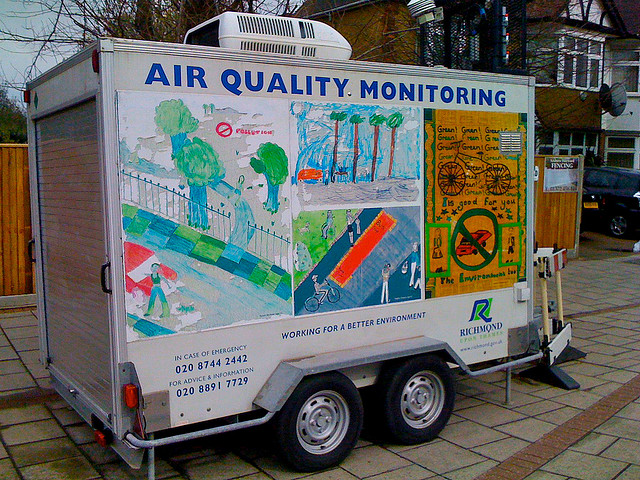Over the past couple weeks Aubrey and I have been posting
about the controversies that have come up in the town of Pavillion,
Wyoming. The previous posts were
concerned with the water contamination and finding the source of the
contamination, but is water contamination the only concern that residents have
in Pavillion? Many of the residents of
Pavillion have also been making complaints about the possibility of poor air
quality. To investigate these claims
EnCana Oil put a mobile monitoring station in the town of Pavillion.
The mobile monitoring station placed in Pavillion measures
the levels of nitrogen oxides, hydrocarbons, particulate matter and ozone to
figure out a level of air quality. The
station measured the air quality from January 2011 through March 2012. After analyzing the data, none of the levels
exceeded any of the standards for air quality monitored by the U.S.
Environmental Protection Agency. The
only level of air quality that came close to being a concern was ozone which
still remained under the legal limit.
Many of the residents were outraged to find out the results
of the tests and said that they did not get a fair sample of air to test. Residents believed the test was unfair
because the mobile monitoring station was placed on a hill that was about 20
feet in elevation above the well field.
Representatives claimed that they careful chose the location
for the mobile monitoring station and took many factors into account including
wind direction, access to electricity, and topography in order to choose the
best location. Even though the results
of the testing say otherwise, the residents of Pavillion believe something is
wrong with their air quality and future testing will likely be done. No testing is currently going on because all
of the mobile monitoring stations owned by EnCana are already in use at other
sites.
-Adam


This is a great post--I like how you're following up on previous stories and building credibility in this area. This does remind me of Corburn's argument a little, about how citizen science in cases of public health controversy is sometimes useful. Would be interested to think about how public reception of these results would be different if citizens were involved in taking the measurements...
ReplyDeleteJen,
ReplyDeleteI agree. In my own opinion, if I were a citizen of Pavilion, I am not sure how I would react if other citizens were taking the measurements. I would like to think that I would feel confident in my neighbors taking these samples; however, I think that some of the credibility of these samples being taken by people who may not know anything about the science behind these samples would be lost. This is only my opinion. Because I am clearly not a citizen of Pavilion, I cannot speak for them..
Aubrey